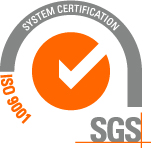- All products are added to your cart.
Compare all portable oxygen concentrators to each other
Compare portable oxygen concentrators
Finding the right concentrator can be quite difficult, that's why you should compare portable oxygen concentrators to each other. Every oxygen concentrator has its own stronger and weaker points. And to make the comparison even harder, the manufacturers use different technologies for oxygen delivery. We are convinced that the Inogen One oxygen concentrators can withstand the comparison with any other concentrator. That’s why we have made an overview for you with the specifications of all mobile oxygen concentrators.
The most important characteristics of a portable oxygen concentrator
What the most important characteristics of an oxygen concentrator are, depends on your needs. For most people the weight, size and sound level will be important. Also look at the battery runtime and the different battery options: this is of great influence on how much freedom the portable oxygen concentrator will eventually give to you. Underneath the table, a number of terms are explained.
Do you have questions about one of the concentrators? Call us! 020 3239 6985 (UK) or +31 85 0190291 (international)
These portable oxygen concentrators are compared to each other:
- Inogen One G2
- Inogen One G3
- SeQual Eclipse 5
- Respironics SimplyGo
- AirSep Freestyle 5
- Invacare XPO2
- DeVilbiss iGo
- AirSep Focus
- Inova Labs LifeChoice Activox Pro

Delivery technology pulse dose
This the technology that determines the amount of oxygen per pulse (also called ‘bolus’). Fixed Minute Volume or Uniform Pulse. With a Fixed Minute Volume, the concentrator gives a fixed amount of oxygen per minute. The oxygen volume per pulse can be easily calculated by dividing the volume of oxygen per minute by the number of breaths per minute. In the case of Inogen One G2 and Inogen One G3 this is 210 ml of oxygen per setting, per minute. So on setting 2 that’s 2 x 210 = 420 ml per minute. With a breath rate of 20 breaths per minute that comes down to 420 / 20 = 21 ml of oxygen per bolus. Does the breath rate go down to 10? Then the oxygen output doubles to 42 ml.
With Uniform Pulse, the concentrator gives a fixed volume of oxygen per pulse. Regardless of the breath rate, every pulse will contain the same amount of oxygen. This does mean, however, that with a high breath rate in some cases the concentrator will not be able to keep up, and will start skipping breaths.
Max. bolus size @ 20 BPM
This is the largest amount of oxygen the concentrator can give in Pulse Dose mode with a breath rate of 20 breaths per minute. For the Inogen One G2 this is calculated like this: the concentrator gives 210 ml of oxygen per minute, per setting, and has 6 settings. 6 x 210 = 1260 ml per minute, divided by 20 breaths is 63 ml of oxygen per bolus.
Sieves replaceable by user
An oxygen concentrator purifies oxygen by removing nitrogen from the air. This is done in the molecular sieve beds. After time, these sieves will become less effective. So it is expected that eventually, the sieves of an oxygen concentrator will have to be replaced. In that case the concentrator has to be returned for repair. In this aspect, the Inogen One G3 outshines all other portable oxygen concentrators with an innovative design feature: the molecular sieve beds are easily replaceable by the user himself. 30 days before the sieves need replacement, a message will pop up in the display. This allows for the user to order new sieve beds and swop them with the old ones. This way you don’t have to miss your concentrator for a day and you save a lot of time and costs!
Trigger sensitivity
A Pulse Dose oxygen concentrator only provides oxygen when you inhale. The concentrator detects a change of pressure in the nasal cannula when you breathe in, and gives an amount of oxygen at exactly that moment. The sensor that detects this pressure change, has to be extremely sensitive. Especially when you use the concentrator at night: during sleep, your breath is more shallow. The sensitivity of the sensor is measured in negative water pressure (- cm H2O). The closer to zero, the more sensitive the sensor.


